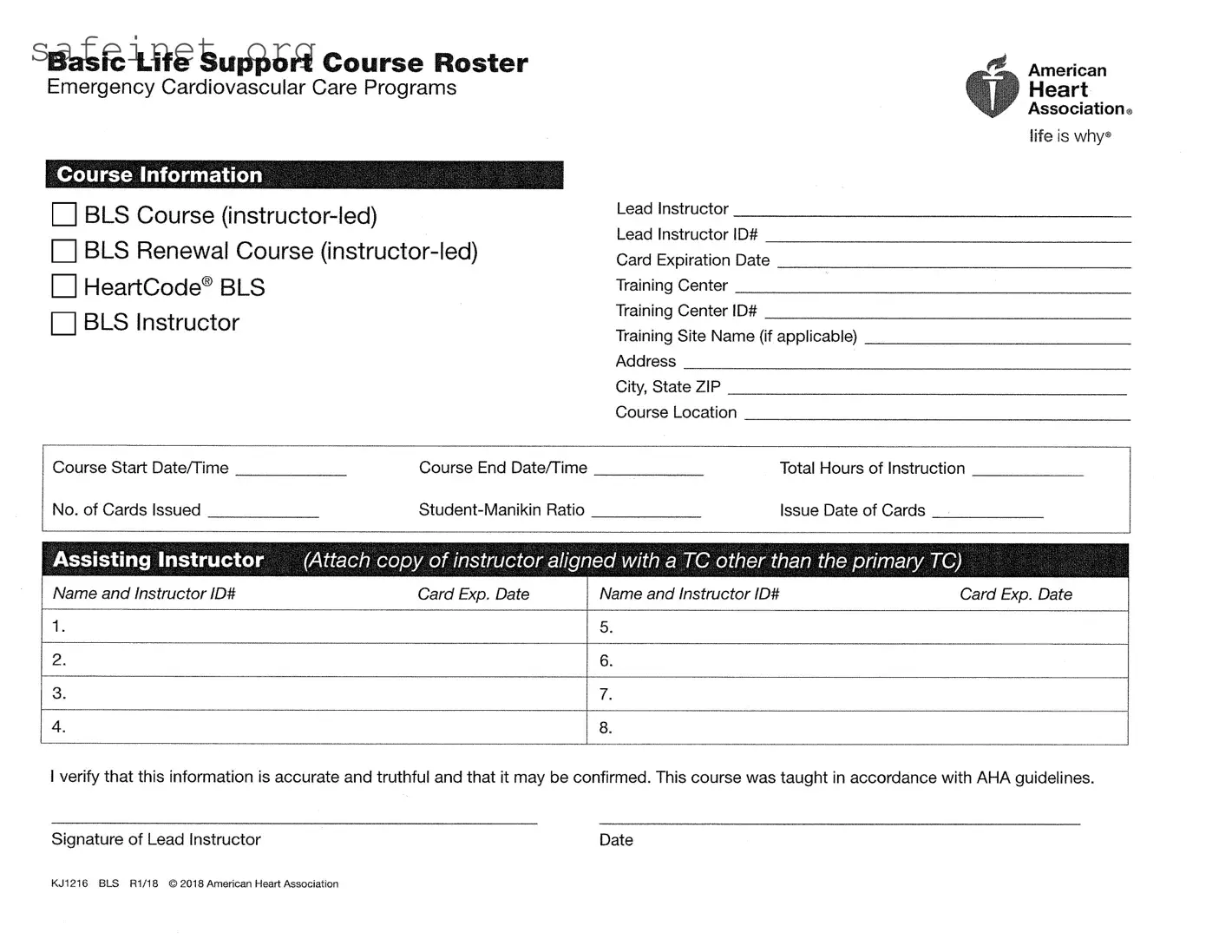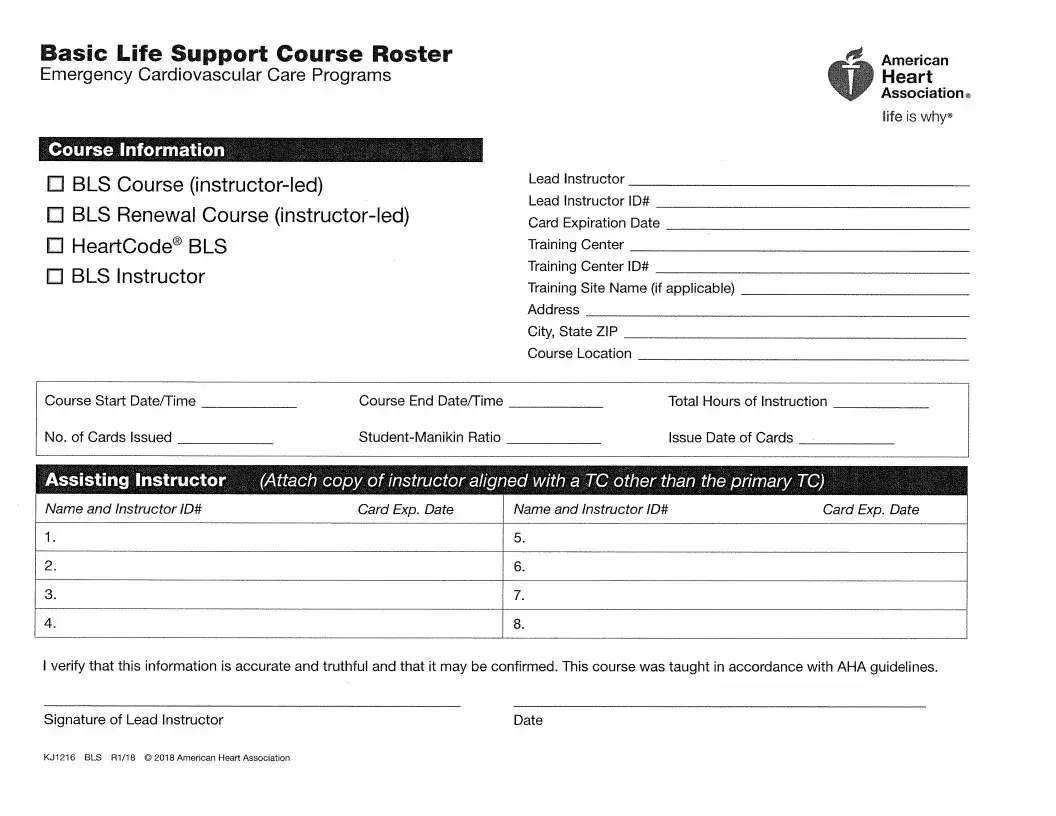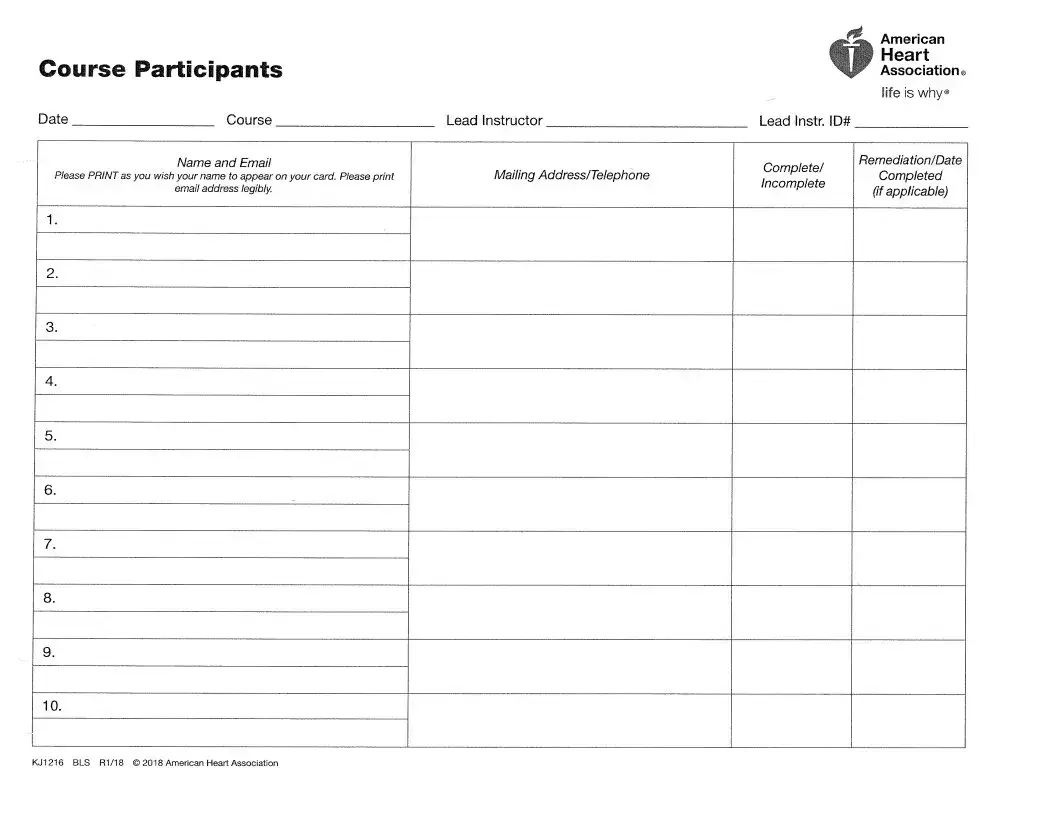What is the Aha Roster form and why do I need it?
The Aha Roster form is a critical document used to record details about Basic Life Support (BLS) courses offered by the American Heart Association (AHA). This form ensures that all participants' training is properly documented. It captures essential information such as instructor names, course dates, and the number of certification cards issued. Using this form helps maintain compliance with AHA guidelines and standards, ensuring that all training is recognized officially.
What information is required on the Aha Roster form?
When completing the Aha Roster form, you’ll need to provide several pieces of information. This includes the course type (like instructor-led or renewal), details about the lead instructor (including their ID number and card expiration date), the training center information, course dates and times, and participant details. Specifically, each participant must have their name printed as they wish it to appear on their card, along with their email and mailing address. Any assisting instructors should also be listed with similar identifying information.
Who can fill out the Aha Roster form?
The lead instructor for the course is responsible for filling out the Aha Roster form. This instructor must have up-to-date AHA credentials and training. It’s crucial that the lead instructor verifies the accuracy of the information documented on the form, as it reflects the legitimacy of the training administered.
What should I do if I made a mistake on the form?
If you find that you've made a mistake after submitting the Aha Roster form, it’s important to address it promptly. You may need to contact the AHA or your training center to determine the correct process for rectifying errors. Often, this could involve submitting an amended form to clarify the discrepancies. Clear communication is key to ensuring that all records are accurate.
How do I verify the information prior to submission?
It is essential to double-check all entries on the Aha Roster form before submission. Ensure that names are spelled correctly, that ID numbers match the instructors’ credentials, and that all required fields are filled out. Having another person review the form can also help catch any mistakes or omissions. Verification of this information is critical for the integrity of the certification process.
What happens if my certification card is issued incorrectly?
If a certification card is issued with incorrect information, you should reach out to the training center that processed your card. They can guide you on the steps necessary for correction. In many cases, a new card can be reissued with the accurate details once the appropriate verification process is completed.
Are there deadlines for submitting the Aha Roster form?
Yes, it is important to submit the Aha Roster form promptly following the completion of a BLS course. Timelines may vary depending on the training center’s policies. Generally, submitting it within several days to a week after the course ensures that participants receive their certification cards in a timely manner. Check with your specific training center for any specific deadlines they may have in place.
What happens if I need to add more participants to the Aha Roster form?
If you have more participants than there are spaces on the form, you can often add additional names in the margins or on a separate sheet, clearly marking it as part of the same course roster. Ensure that all necessary information for each participant is recorded, maintaining clarity and consistency. Confirm with your training center about their preferred method for handling extra names.


